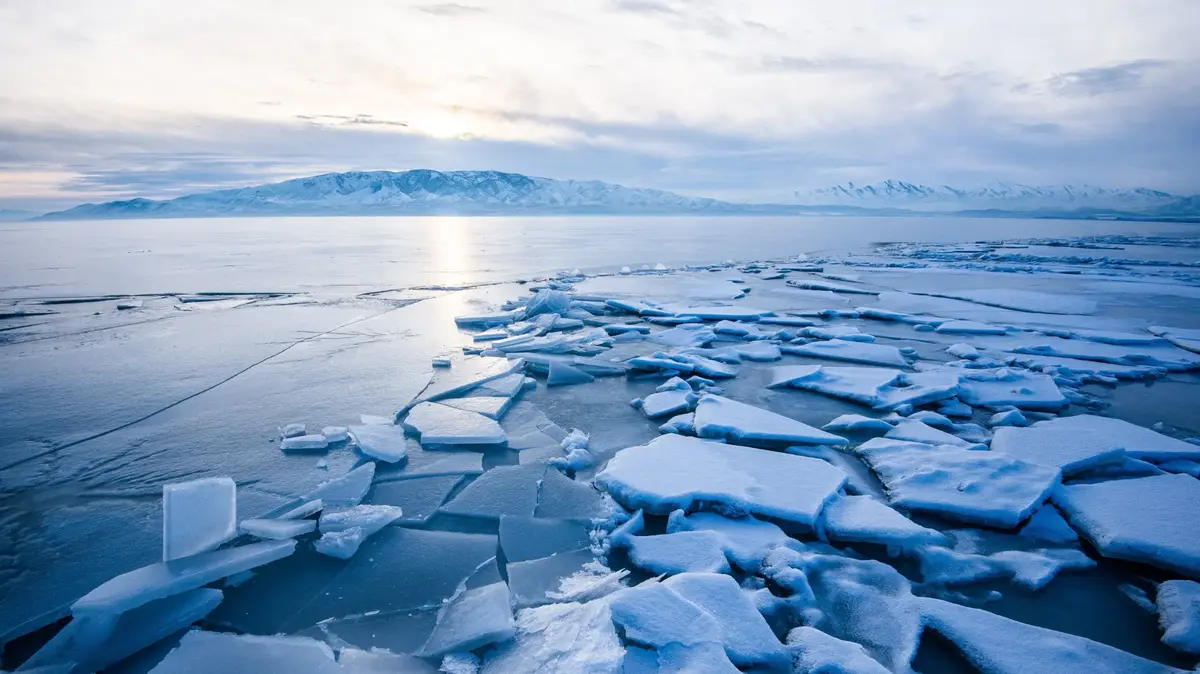Unprecedented extreme heat and extensive and widespread drought marked the European climate in 2022. These are two of the signs that a climate crisis is manifesting that is hitting this continent particularly hard, which in 2022 suffered the second warmest year ever registered.
If the focus is only on the summer, the situation is even more extreme: it was the hottest summer since there are reliable records (starting in the 20th century).
At the same time, the concentration in the atmosphere of the main causes of this climate change —greenhouse gases— also reached its maximum since these data were stored.
"Temperatures in Europe are rising twice the global average, faster than on any other continent," warns the Report on the State of the Climate in Europe 2022, produced by the Copernicus Climate Change Service, dependent on the European Comission.
One of the reasons for this phenomenon is that a significant part of the continent is located in the subarctic and arctic, which are the fastest warming regions of the entire planet.
Also, the continent has a high percentage of land, which gets hotter than the water surface.
Added to this are changes in climate feedback, such as jet streams.
The Cijara reservoir, in Villarta de los Montes (Badajoz), during the August drought. THOMAS COEX (AFP)
Taking the average temperatures of the last five years as a reference, global warming is around 1.2 degrees Celsius compared to pre-industrial levels (1850-1990);
In the case of Europe, this increase in temperature already reaches 2.2 degrees compared to that pre-industrial era, the moment in which human beings began to burn fossil fuels on a large scale that expel greenhouse gases.
But climate change does not only imply an increase in average temperatures;
also an increase in extreme phenomena, such as the succession of heat waves like those that were experienced very early in 2022, for example, in Spain.
Or the intense drought that affected a third of Europe at its peak last year, according to the Copernicus report.
Furthermore, the flow of European rivers was the second lowest ever recorded, marking the sixth consecutive year with below-average flows.
"2022 was the driest year since there are records and 63% of European rivers had flows below average," explains this European agency.
Spain was one of the black spots also regarding the drought.
The forecast is that it will continue to suffer from this water stress, explains Samantha Burgess, deputy director of the Copernicus Climate Change Service.
This specialist considers it "probable" that there will be water availability problems in summer if the situation does not change, something that scientific models do not point to.
Projections go in the opposite direction: southern Europe is expected to continue dry conditions in spring and summer, Burgess adds.
This will have implications in the reduction of agricultural production, among other issues, predicts this person in charge of Copernicus.
“Our climate is changing”, sums up Carlo Buontempo, director of the Copernicus Climate Change Service.
The solution to prevent this crisis from reaching the most catastrophic levels is already determined by scientists.
On the one hand, Buontempo highlights, reducing greenhouse gas emissions.
On the other, undertake adaptation actions to anticipate the negative effects that the increase in temperatures and extreme weather events will bring.
Because this "climate crisis" entails "serious consequences" for ecosystems, societies and the economy, warns this specialist.
heat stress
Specialists highlight that last summer was not only the hottest ever recorded in Europe – with temperatures 1.4 degrees above average – but that the previous one (2021) had already been the warmest.
That is to say, the records have been accumulating in the last decade and are not something anecdotal, but rather reflect the warming trend that Europe is suffering like the rest of the globe.
The south of the continent was especially hard hit.
“He experienced a record number of days with very strong heat stress.
In general, throughout Europe there is an upward trend in the number of summer days with strong or very strong heat stress, and in southern Europe the same is true with extreme heat stress,” the Copernicus report states.
The study also includes a section on the impact of weather conditions on the production of renewable energies, which are emerging as the main substitutes for fossil fuels to combat climate change.
And the most affected, for the better, was solar.
In 2022, Europe received the highest amount of surface solar radiation in the last 40 years.
This meant that the generation potential of photovoltaic solar energy was above average in most of the continent, a trend that has been observed in the last four decades.
The immediate future: from La Niña to El Niño
Scientists hope that starting this summer the El Niño phenomenon will return, which means an increase in temperature in certain areas of the Pacific Ocean.
This in turn triggers an increase in global temperatures and the worsening of extreme events.
On the opposite side is La Niña, which implies that it softens temperatures in a large part of the planet and that it has been present in recent years.
The dry bed of the Po river, the longest in Italy, as it passes through Boretto on June 22, 2022, in the worst drought the country has experienced in 70 years.GUGLIELMO MANGIAPANE (Reuters)
The effects of El Niño take months to unleash on a global scale, but, according to Buontempo, they will end up raising global temperatures.
The question is whether this will happen in 2023 or 2024. During the last period dominated by the El Niño phenomenon (between 2014 and 2017) the warmest year on the planet occurred since reliable records began in the 19th century: it was 2016 .
You can follow CLIMATE AND ENVIRONMENT on
and
, or sign up here to receive
our weekly newsletter
Subscribe to continue reading
Read without limits
Keep reading
I'm already a subscriber














